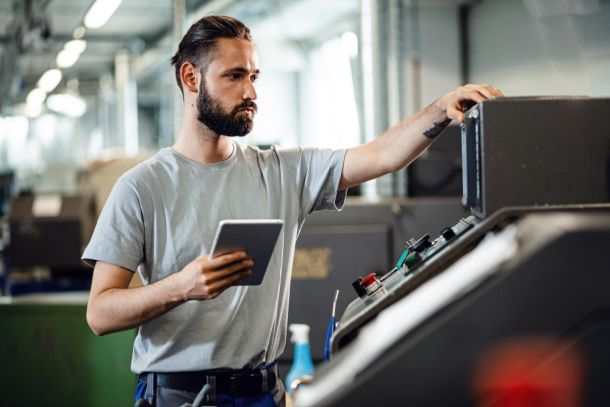Why Ergonomics Reigns Supreme in Manufacturing
Manufacturing keeps the wheels of the world turning. From the cars we drive to the phones in our pockets, countless products rely on the tireless efforts of factory workers. But this essential industry can come at a cost – worker safety. Repetitive motions, awkward postures, and heavy lifting can lead to a silent epidemic of musculoskeletal disorders (MSDs), causing pain, disability, and lost productivity. This is where ergonomics steps in, not as a flashy new technology, but as a silent guardian angel, ensuring worker well-being and maximizing safety.
The Alarming Cost of a Discomforting Workplace
The numbers paint a concerning picture. According to the Bureau of Labor Statistics, MSDs account for a staggering 35% of all workplace injuries in the US, with manufacturing leading the pack. A 2020 study by the Liberty Mutual Research Institute revealed that MSDs cost employers an average of $20,000 per claim, highlighting the significant financial burden these injuries pose. But beyond the economic impact, the human cost is even greater. Chronic pain, reduced mobility, and lost wages can devastate workers' lives.
Ergonomics: The Science of Safety
Ergonomics, often referred to as "human factors engineering," is the science of designing workplaces to fit the worker, not the other way around. It's about ensuring tasks, tools, and equipment are positioned and designed to minimize physical stress and strain. Imagine an assembly line worker constantly reaching overhead to grab parts. Over time, this can lead to shoulder pain. Ergonomics might suggest lowering the assembly line or providing adjustable workstations to reduce this risk.
Let's take a look at some practical examples of ergonomics in action:
- Adjustable workstations: Factory workers come in all shapes and sizes. Adjustable chairs, monitor stands, and work surfaces allow workers to customize their environment for optimal comfort and posture.
- Material handling aids: Heavy lifting is a major risk factor for MSDs. Implementing ergonomic solutions like lift assists, hoists, and conveyor belts can drastically reduce the physical strain on workers.
- Proper tool design: Ergonomically designed tools are lighter, have comfortable grips, and minimize awkward hand positions. This can significantly reduce the risk of carpal tunnel syndrome and other hand and wrist injuries.
The ROI of a Healthy Workforce
Investing in ergonomics is a win-win situation. Studies have shown that ergonomic interventions can lead to a significant reduction in MSDs, worker absenteeism, and workers' compensation claims. A 2016 study by the American Journal of Industrial Medicine found that a comprehensive ergonomics program in a meatpacking plant reduced MSDs by a remarkable 62%. Additionally, improved worker comfort and decreased fatigue can lead to increased productivity and overall morale.
Ergonomics: Not Just a Buzzword, But a Safety Standard
Ergonomics is not a passing fad; it's a fundamental principle of workplace safety. By prioritizing ergonomic design and practices, manufacturing companies can create a safer, healthier, and more productive environment for their workforce. This translates not only to a happier and more engaged workforce but also to a stronger bottom line. In the ever-competitive world of manufacturing, ergonomics plays a critical role in ensuring a company's long-term success. It's time for ergonomics to take its rightful place as a top safety priority, safeguarding the well-being of the people who keep the wheels of industry turning.












